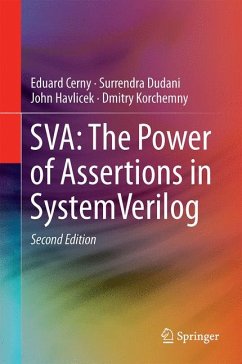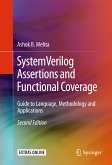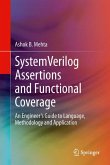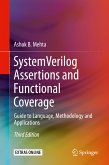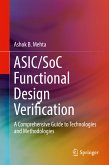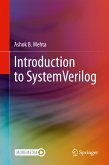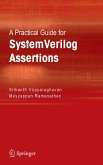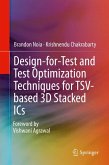This book is a comprehensive guide to assertion-based verification of hardware designs using SystemVerilog Assertions (SVA). It enables readers to minimize the cost of verification by using assertion-based techniques in simulation testing, coverage collection, and formal analysis. The book provides detailed descriptions of all the language features of SVA, accompanied by step-by-step examples of how to employ them to construct powerful and reusable sets of properties. The book also shows how SVA fits into the broader SystemVerilog language, demonstrating the ways that assertions can interact with other SystemVerilog components. The reader new to hardware verification will benefit from general material describing the nature of design models and behaviors, how they are exercised, and the different roles that assertions play. This second edition covers the features introduced by the recent IEEE 1800-2012
SystemVerilog standard, explaining in detail the new and enhanced assertion constructs. The book makes SVA usable and accessible for hardware designers, verification engineers, formal verification specialists, and EDA tool developers. With numerous exercises, ranging in depth and difficulty, the book is also suitable as a text for students.
· Provides a comprehensive guide to assertion-based verification with SystemVerilog Assertions (SVA);
· Includes step-by-step examples of how SVA can be used to construct powerful and reusable sets of properties;
· Covers the entire SVA language with all the recent enhancements of the IEEE 1800-2012 SystemVerilog standard.
Dieser Download kann aus rechtlichen Gründen nur mit Rechnungsadresse in A, B, BG, CY, CZ, D, DK, EW, E, FIN, F, GR, HR, H, IRL, I, LT, L, LR, M, NL, PL, P, R, S, SLO, SK ausgeliefert werden.

